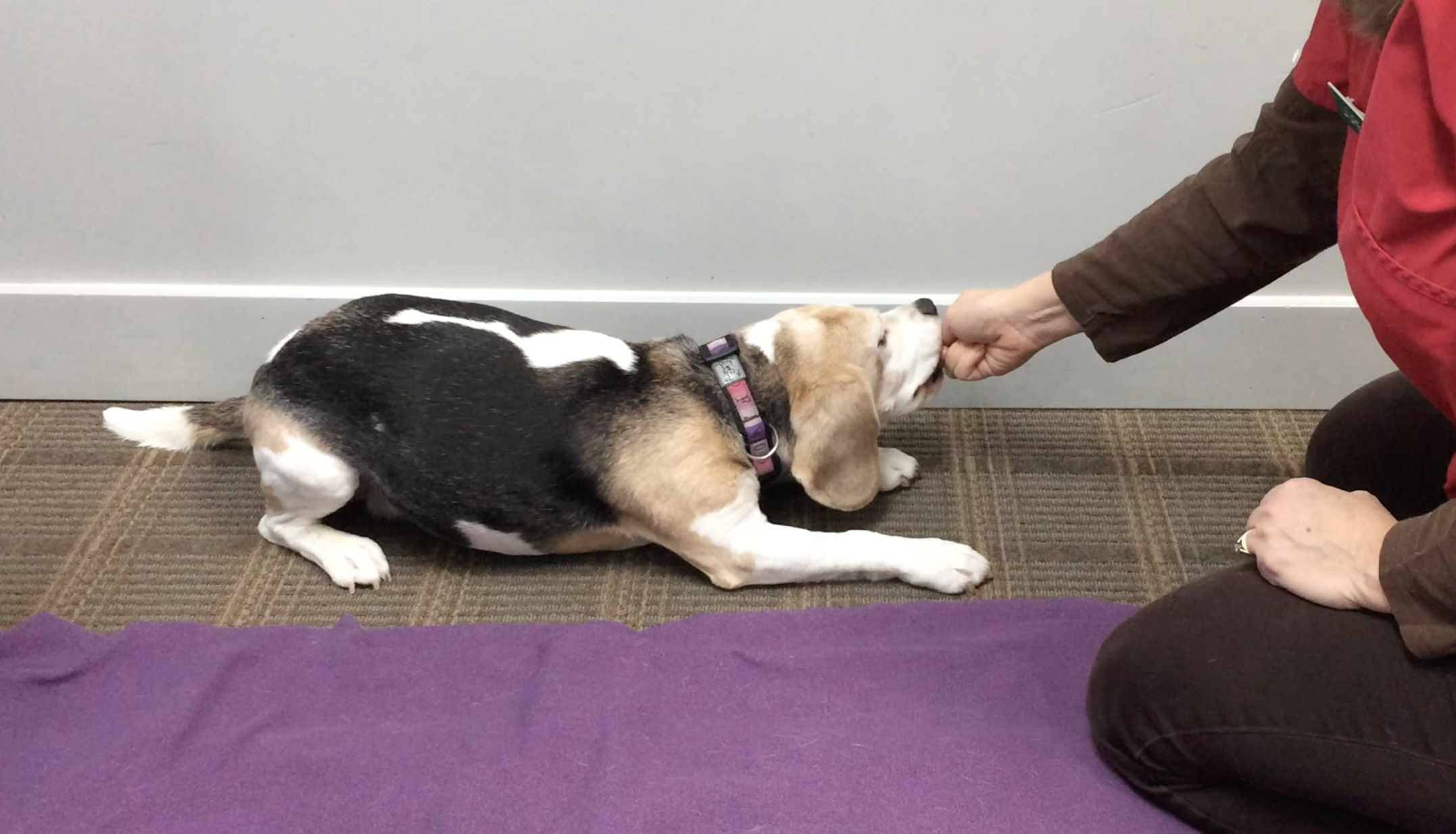Laurie's Blogs.
Apr 2021
Lumbosacral Disease – Part 3 – Clinical Reasoning

I have received a number of emails since doing this series of blogs (and e-blasts) regarding lumbosacral disease. There have been some good questions that highlight the need for another blog on this topic. This time we need to talk about clinical reasoning.
Rule number 1: There is not, and there cannot be a succinct protocol to treat this condition. Sure, I could write up a list of things to do if the dog is acute, things to do if they are subacute, things for the owners to do at home, things to do in clinic. But basically, when it comes down to it, it all boils down to CLINICAL REASONING!
Rule number 2: Pain is your guide. Thinking of doing some mobilizations at L7 but the vertebra is too tender? Then don’t do it! The dog cries going UP stairs, then don’t do extension exercises. The dog is in an exaggeratedly rounded position and chooses to sit down all the time, then keep them flexed with what you do.
Rule number 3: Lumbosacral disease exists on a continuum. There is a spectrum of physical and clinical manifestations. Inflammation plays a big part in what you do and how much you do. As such, there are no hard and fast rules… other than rule number 2. Don’t cause pain. But… the same patient might walk into your treatment room on a Monday and look terrible, but by Friday, they look normal. Your treatment should vary depending upon the clinical presentation, your understanding of the pathology, and knowledge of the physiological impact your interventions.
So, here’s a question I received on the subject of the Pelvic Tilt exercise that I like for **some** of these cases:
“In your video (and blog post), you describe a flattening/extension of the spine to help with early stages of LSD. Diane on CAM showed, that spine extension is painful for these dogs, since it narrows the LSJ and the intervertebral foramina. She even showed us a video of a dog walking backwards up the stairs in order to avoid spinal extension. (I'm sure you have seen the presentation 🙂 ) And that all the dogs with moderate or severe LSD roach/flex their spines when given the choice to do so, it seems to be the most comfortable position.
Now I'm stuck. Do I go for spinal extension when trying to rehab these early stages of LSD, or for (hyper?) flexion to open up the foramina and LSJ? Something must be mixed up in my thoughts, and I can't find out what it is... Could you be so kind and help me out?”
My answer:
Okay... so I understand the confusion... because both things are correct!
So, I would agree that when the nerves are flared up and uncomfortable, that extension should be avoided. It hurts. When things are not flared up and/or there are only mild symptoms, then I would add in the exercise as a way to move that region, desensitize that region perhaps (think 'maladaptive pain' and reintroducing 'safe movement' so that the nervous system doesn't over-react.), perhaps increase blood flow to the region, and used / retrain muscles in the region, have the nervous system accommodate to the reduction in space without getting flared up, and so on. Now, the caveat is that if it's too uncomfortable, or if it hurts, or if makes things worse ('it' being the exercise) then don't do it, because it's a matter of 'WHEN' is it an appropriate exercise.' So, it very much falls into the category of professional judgement and clinical reasoning as to whether now is the time to use it or not.
GREAT question!!!!!
I challenge everyone to step into the realm of clinical reasoning for all of your canine rehab cases this week. WHY are you doing what you are doing? WHAT effect do you think you are having? WHEN is this (what you are doing now) appropriate or not appropriate? SHOULD you be doing something differently? It reminds me of the latest book I listened to Think Again by Adam Grant. Especially in any medical field, we should be challenging ourselves to think again… to improve upon our knowledge, skills, and hopefully outcomes. Challenge paradigms. Question rules. Ask questions. Rethink the problem!
I hope this helps! Have a great week ahead!
Cheers,
Laurie


